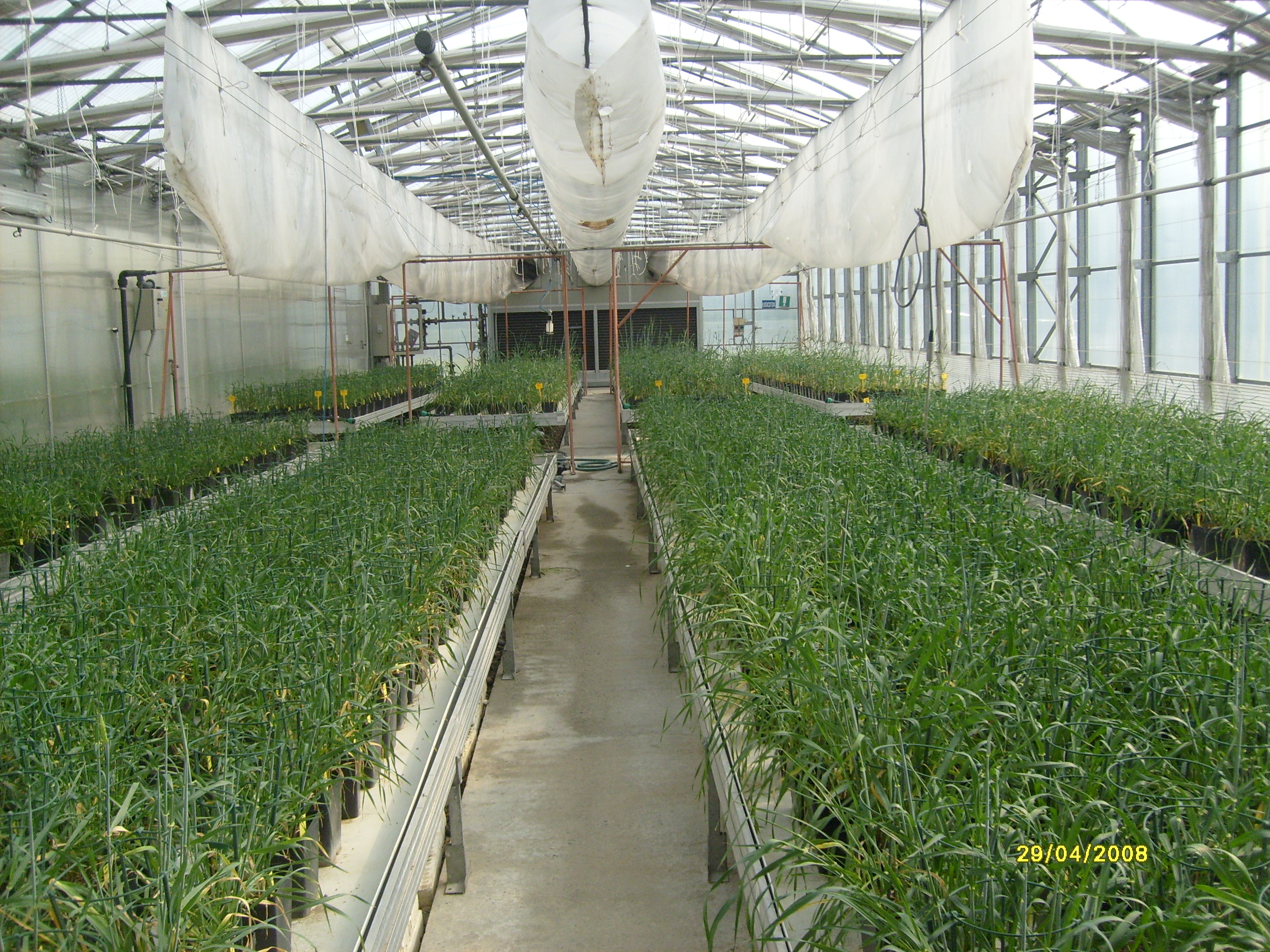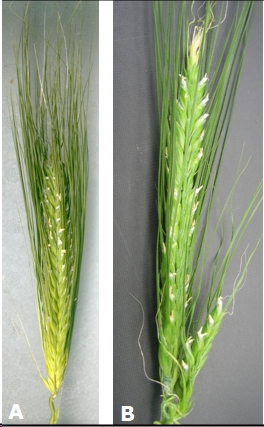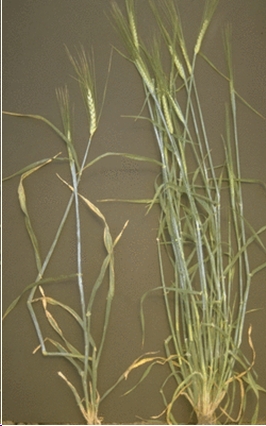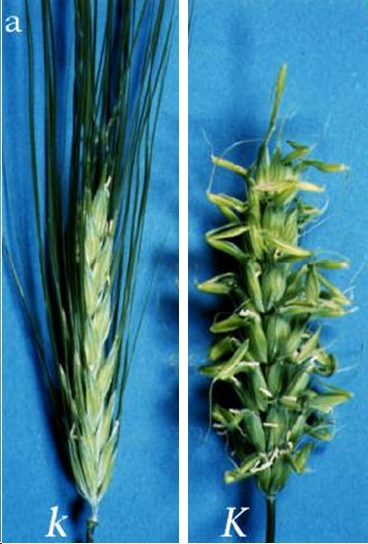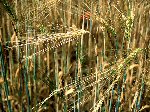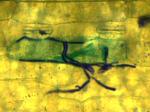Organisation - PTP |
|
|
|
|
|
PARCO TECNOLOGICO PADANO Parco Tecnologico Padano (PTP, http://en.tecnoparco.org/ ) was founded in 2000 with the mission of becoming a centre of excellence in the field of genetics and genomics applied towards the agriculture, food and feed sectors. PTP was identified by the Italian Ministry of Research (MIUR) as the Reference Center at Italian national level for animal and plant research. PTP promotes regional development through the creation of start-ups and spin-offs, by offering know-how, facilities and services.
The PTP Genomics Platform is a genotyping platform specialized in the analysis of plant DNA and RNA samples - see http://en.tecnoparco.org/Default.aspx?tabid=73 . The PTP Genomics Platform is equipped with high-throughput instruments to carry out genotyping analysis with a range of molecular markers (SSR, AFLP, SNP). A novel protocol for TILLING analysis (FLUOTILL) was also implemented and is currently used to carry out screening service of the Hordeum vulgare cv Morex (population TILLMORE) developed at the University of Bologna. RESEARCH RELEVANT FOR BarleyGenomeNet Barley research at PTP encompasses a range of complementary approaches, including classical and molecular genetics, comparative and functional genomics, TILLING analyses. Major areas of interest are the identification and functional characterization of genes involved in response to abiotic stress, plant architecture and development, as well as high throughput technologies for TILLING.
Barley populations growing in the greenhouse GENETIC AND MOLECULAR DISSECTION OF BARLEY DEVELOPMENT In partnership with the Department of Crop Production at University of Milan
(http://www.diprove.unimi.it/ ), the Plant Genomics Group at PTP has been
developing a research programme for the genetic and molecular dissection of
barley development as a mean to identify useful genes for the manipulation of
plant traits including plant height, tillering capacity and ear fertility,
spike morphology and floret development and the associated meristem functions.
In parallel to map-based approaches, candidate genes for meristem function and lateral organ development have been identified through molecular approaches, using as a starting point the Hooded (K) mutant (Fig. 4).
The K phenotype is due to the duplication of a 305 bp enhancer element in intron IV of the Barley knox3 (BKn3) gene (Mueller et al., 1995). Knox (knotted1-homeobox) genes are normally expressed in shoot meristems and downregulated in lateral organ primordia. In K barley, the 305bp enhancer element causes ectopic expression of Bkn3 in the lemma-awn transition zone leading to the formation of an ectopic meristem that develops into an epiphyillic flower. This provides an ideal experimental system to investigate mechanisms of knox gene regulation. A one hybrid screen aimed at isolating putative regulators of the BKn3 gene uncovered 4 proteins capable of interacting with the 305 bp element (K Intron Binding Proteins, KIBPs). Molecular and functional analyses of these genes suggest they may mediate the cross-talk between the knox network and hormonal pathways. To gain insight into KIBP gene function a range of reverse genetics approaches have been undertaken. BARLEY TILLING SERVICE Efficient reverse-genetics platforms are an essential tool for validation and functional characterisation of candidate genes. Among these, TILLING (Targeted Induced Local Lesions IN Genomes) is a particularly attractive strategy and can also be used in forward genetics approaches aimed at the identification of mutants exhibiting phenotypes of interest. The TILLMore (http://www.distagenomics.unibo.it/TILLMore/ ) population was developed by DISTA, University of Bologna (Italy) and is the first TILLING resource for the barley cultivar Morex providing the national and the international research community with a new opportunity for functional genomics in barley. As part of a collaborative project between the University of Bologna and PTP, all TILLING screenings are carried out by the PTP Genomics Platform where a highly-automated protocol was developed and validated. A TILLING service was implemented and is now active and available to public Research Institutes. ASSOCIATION GENETICS OF RESPONSES TO ABIOTIC STRESS A recent area of interest is the use of association genetics approaches
for the identification of chromosomal regions and candidate genes involved
in response to low temperatures and drought. PUBLICATIONSOsnato M, Stile MR, Wang Y, Meynard D, Curiale S, Guiderdoni E, Liu Y, Horner DS, Ouwerkerk PBF, Pozzi C, MüKJ, Salamini F, Rossini L. Cross-Talk between the KNOX and Ethylene Pathway Is Mediated by Intron-Binding Transcription Factors in Barley. Plant Physiol. 2010 Oct 4. [Epub ahead of print] Fricano A; Rizza F; Faccioli P; Pagani D; Pavan P; Stella A; Rossini L; Piffanelli P; Cattivelli L. (2009) Genetic Variants of HvCbf14 are Statistically Associated with Frost Tolerance in a European Germplasm Collection of Hordeum vulgare. TAG 119(7):1335-48. Rossini L, Vecchietti A, Nicoloso L, Stein N, Franzago S, Salamini F, Pozzi C (2006) Candidate genes for barley mutants involved in plant architecture: an in silico approach. Theor. Appl. Genet. 112: 1073-1085 Pozzi C, Rossini L, Vecchietti A, Salamini F (2004) Gene and genome changes during domestication of cereals. In Cereal Genomics, eds. Gupta, P.K.; Varshney, R.K. (Hrsg.), Kluwer Pub. Roig C, Pozzi C, Santi L, Muller J, Wang J, Stile MR, Rossini L, Stanca M, Salamini F (2004) Genetics of barley Hooded suppression. Genetics 167: 439-448 Pozzi C, Di Pietro D, Halas G, Roig C, Salamini F (2003) Integration of a barley (Hordeum vulgare) molecular linkage map with the position of genetic loci hosting 29 developmental mutants. Heredity 90(5):390-396. Santi L, Wang Y, Stile MR, Berentzen K, Wanke D, Roig C, Pozzi C, Muller K, Muller J, Rohde W, Salamini F. (2003) The GA octodinucleotide repeat binding factor BBR participates to the transcriptional regulation of selected plant homeobox genes. Plant Journal 34: 813-126. Pozzi C (2002) Barley and maize: model systems for leaf development. Maydica 47: 245-251. Pozzi C, Rossini L, Agosti F (2001) Patterns and symmetries in leaf development. Cell & Dev. Biol. 12: 363-372. Muller J, Muller K, Pozzi C, Santi L, Wang Y, Salamini F, Rohde W (2000) Networking around the barley Hooded locus: molecular analysis of potential partners for epiphyllous flower formation. Barley Genetics VIII. 114-116. Muller KJ, Pozzi C, Muller J, Salamini F, Rohde W (2000) Molecular analysis of homeotic genes involved in barley development. Eur. J. Physiol (Suppl.) R14-18. Muller K, Pozzi C, Muller J, Salamini F, Rohde W. (2000) Molecular analysis of homeotic genes involved in barley development. Pflugers Arch.;439(3 Suppl):R14-5. Schmitz J, Franzen R, Nguyen T-H, Garcia-Maroto F, Pozzi C, Salamini F, Rohde W. (2000) Cloning, mapping and expression analysis of barley MADS-box genes. Pl. Mol. Biol. 42: 899-913. Badr A, Müller KJ, Schäfer-Pregl R, El Rabey H, Effgen S, Ibrahim HH, Pozzi C, Rohde W, Salamini F. (2000) On the origin and domestication history of barley (H. vulgare). Mol. Biol. Evolution, 17: 499-510. Pozzi C, Faccioli P, Terzi V, Stanca M, Cerioli S, Castiglioni P, Fink R, Capone R, Müller KJ, Bossinger G, Rohde W, Salamini F. (1999) Developmental alternative states of a barley floral bract. Genetics 154: 1335-1346. Pozzi C, Müller KJ, Rohde W and Salamini F (1999) Leaf development, pp. 145-165. In: Development (ed. V. Russo et al.). Berlin: Springer Verlag. Castiglioni P, Pozzi C, Heun M, Terzi V, Müller KJ, Rohde W, Salamini F (1998) An AFLP-based procedure for the efficient mapping of mutants and DNA probes in barley. Genetics 149: 2039-2056. *both authors made equal contribution to this work. Müller K, Pozzi C, Salamini F, Rhode W (1995) Homeotic gene expression and plant development. Med. Fac. Landbouww. Univ. Gent, 60/4a. Müller KJ, Romano N, Gerstner O, Garcia-Maroto F, Pozzi C, Salamini F, Rohde W (1995) The barley Hooded mutation caused by a duplication in a homeobox gene intron. Nature, 374: 727-730. |
|
Barley Genome Net - Organisation - PTP |
|
|
|
|
|
|
 Within PTP, the Plant Genomics Section is involved in research projects in
the areas of genetics, genomics and breeding of cereal and fruit crops, as
well as plant biotechnology and diagnostics on plant-derived products
(
Within PTP, the Plant Genomics Section is involved in research projects in
the areas of genetics, genomics and breeding of cereal and fruit crops, as
well as plant biotechnology and diagnostics on plant-derived products
(